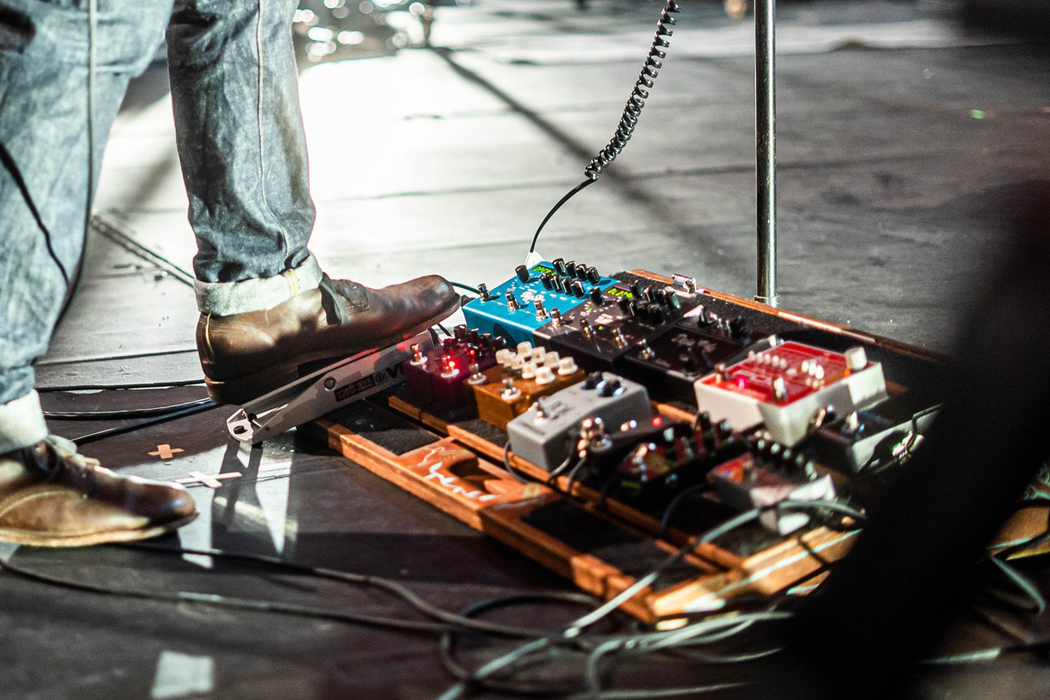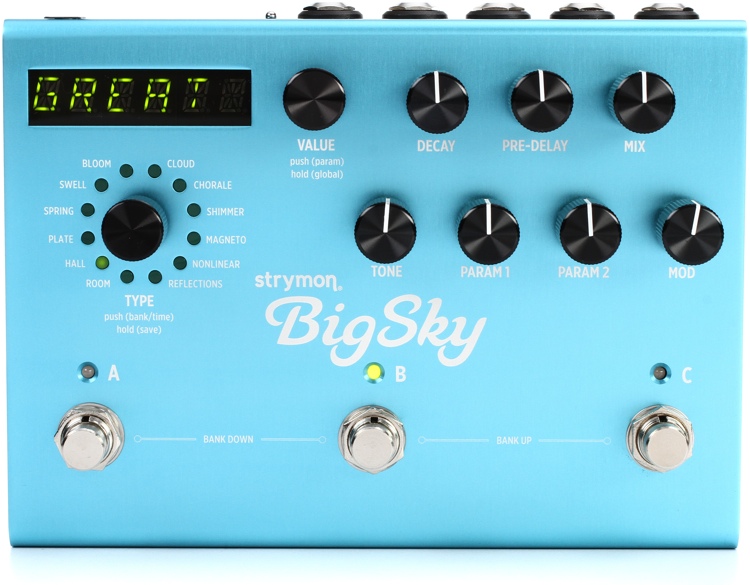
+ Learning about synths? Preview Soundfly’s definitive new online course, Advanced Synths and Patch Design for Producers, for free and subscribe for access.
Effects pedals for synths and keyboards are often times guitar pedals that synth enthusiasts use to spice up their sounds, both for live performances and studio experimentation alike.
In this post, we are going to be taking an in-depth look at some of the best effects pedals for keyboards currently available. I have used all of these options and can highly recommend them after years of use.
Effects (or “FX”) pedals can come in handy when you want to dial in some experimental sounds, create some beautiful reverb, throw down some delay, or to just approach writing songs a little bit differently. If you’ve ever been to a show and noticed a keyboardist frequently bending over to a pedalboard, they are most likely dialling in or changing parameters for their next song or part.
You can use these pedals with most synths and keyboards built nowadays. Sometimes cheaper synthesizers will not have as many FX to tweak, this is where FX pedals would be great for your keyboards.
Common Types of FX for Your Keyboards
There are several common types of FX that you may want to dive deeper into with your keyboard setup. There are even more types of FX pedals, but I want to highlight the ones that I think work especially well with synthesizers.
Note: You will need some instrument cables when using pedals.
- Reverb: Piano sounds can greatly benefit from reverb pedals. Not all digital pianos or synths will have reverb built-in (and if they do, they often sound super unrealistic). Reverb pedals also typically allow you to dial in some beautiful and organic room tones and shapes.
- Delay: If you’ve ever listened to Pink Floyd, you have for sure heard tons of delay on their keyboards. Experimental music really takes advantages of delays in order to dive into crazy chords and intervals.
- Distortion: Distortion pedals are some of my favorites for when it comes to making a gritty bass sound or a ripping lead. I’ve recently been experimenting with putting it on some of my bass guitar VST plugins and it creates a super full sound when done right.
- Harmonizer: While typically used with guitars, harmonizers can make for some incredible contrast. Say you have a really cool keyboard lick, you can turn this pedal on and instantly have it harmonize with your part.
- Wah Wah: Wah wah pedals are actually pretty cool when used on keyboards. I would recommend using these on lead sounds to create a guitar like effect.
Now on to the list. And don’t forget to check out Soundfly’s online course, Advanced Synths and Patch Design for Producers, and learn how to move beyond presets to create a wide array of scintillating synth sounds for your productions.
Best FX Pedals for Synths and Keyboards
I’ve been playing keyboards live on stage for years, and these are my three favorite pedals to take with me wherever I go.
1) Strymon BigSky Reverberator Pedal

Who doesn’t love a great, dependable reverb pedal? The Strymon BigSky Reverberator pedal is one of the most popular pedals used for keyboard reverb. There are 12 different reverb settings to pick from, with each one bringing a little something different to the table. You can throw this on a piano sound in order to add some natural reverb to your tracks as well as experiment with it on pads or leads in real-time.
This pedal is digital and full stereo. You can really get to some crazy sounds with the BigSky reverb pedal, try it out!
2) Strymon Brigadier Delay Pedal

The Strymon Brigadier delay pedal is one of the most popular options currently available. Delay can create amazing soundscapes and bring fullness to your mixes and I was fortunate enough to see this thing in action on one of my band’s records. This is for the synth enthusiast who is into experimental music and loves making things sound weird and unconventional.
Watch this video below to see an example of using this FX pedal with your keyboards.
3) EarthQuaker Plumes Overdrive

EarthQuaker Devices’ Plumes is a very simple overdrive (distortion) pedal to use. Throw this on some bass sounds or some gripping synth leads and find your shredding happiness. I feel like a distortion pedal is always something great to have on stand by, because you never know when you’re going to need to take your gain and crunch up a notch!
Overdrive pedals are heavily used with guitar, but I feel like they aren’t heavily used yet with synths or pianos. When done right, these can make even the cheaper digital pianos sound fantastic. I was able to use this pedal for the lead piano sound in this track below. The piano overall has this amazing distortion to it that pulls at your heartstrings.
What to Look for in a Pedal for Your Keyboards
- Does It Sound Good: This is the key. See below.
- Analog vs. Digital: I personally think people get hung up too much on this conversation. If a pedal sounds good, it sounds good. There are so many keyboards today that are more digital than analog, yet sound incredible. So rather than shoot for authenticity or retro effects, go with what you like because of the sounds and ease of use.
- Price: Typically with audio, you get what you paid for. The good thing with pedals is that you’re going to be usually paying a decent amount, meaning you will get a lot of use out of it. Pedals tend to last for many years if you take care of them.
Where to Place Keyboard Pedals?
Lastly, this is not always intuitive for synthesists and keyboard players who don’t often gig, but it’s a question I’ve gotten a few times. Where to place your pedals? And the short answer is, wherever makes you most comfortable on stage or in the studio.
I have placed FX pedals everywhere. Certain ones are good to have on the ground where you can trigger them with your foot, while others are important to have elevated near your hands so that you can change parameters on the fly.
If you watch Pink Floyd videos, you will notice Richard Wright constantly changing settings on his pedals with his hands. He would place his FX pedals often on top of his keyboard setup. So some of the various options might be:
- On the ground
- On a pedal board
- On your keyboards
- On a stand
Hope this helps! Let me know which of these you have used in the Comments below.
Continue learning with hundreds of lessons on mixing, DIY home recording, electronic music production, beat making, and so much more, with Soundfly’s in-depth online courses, like: The Art of Hip-Hop Production, Modern Mix Techniques, and of course, Advanced Synths & Patch Design. Subscribe to get unlimited access here.
—
Chris Senner is the founder of KeyboardKraze. Over the last 6 years he has toured the country playing keyboards in the band Vinyl Theatre. He’s been playing keyboards for over 20 years and this website is where he loves to share the knowledge he’s accumulated.





